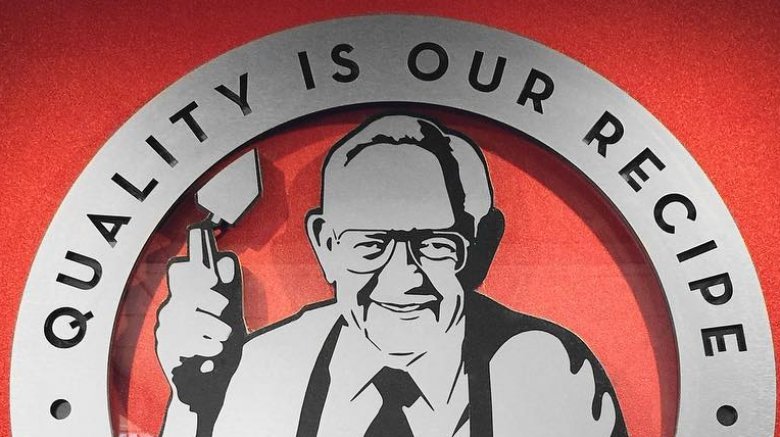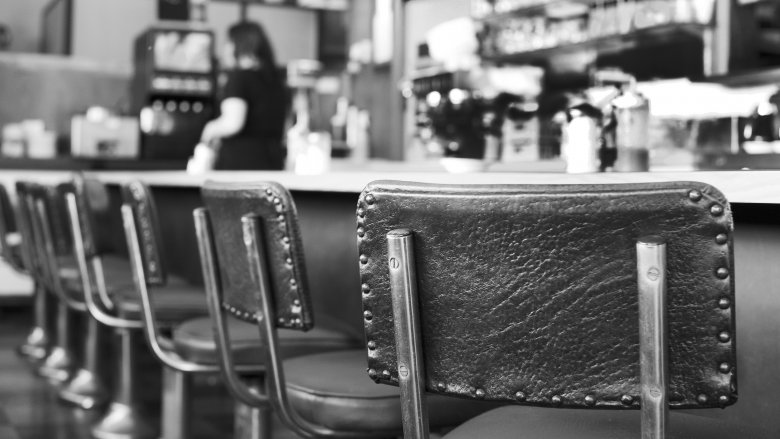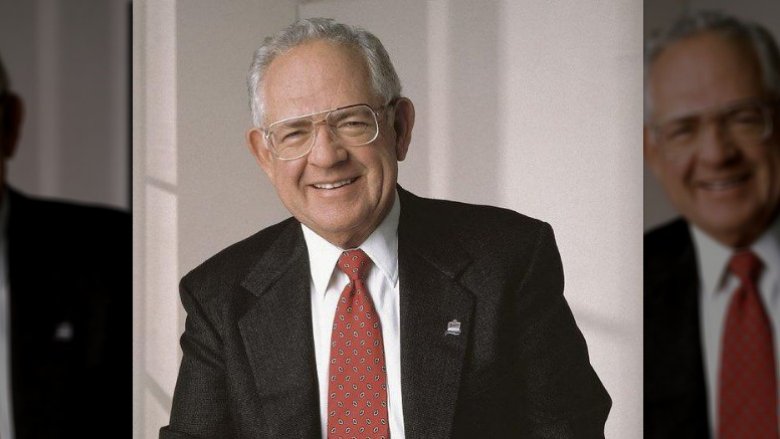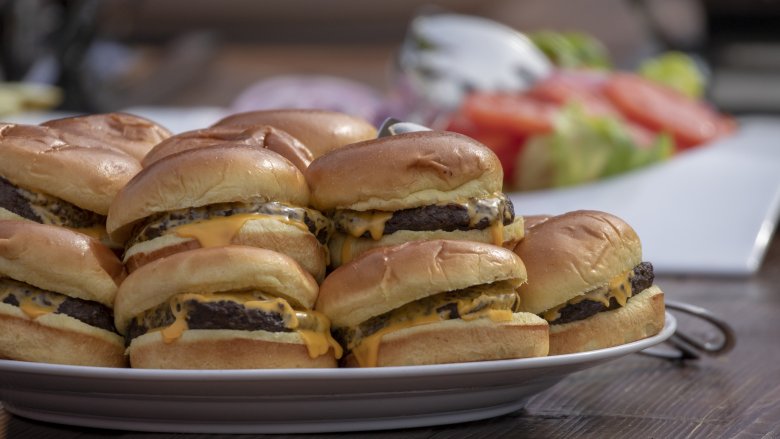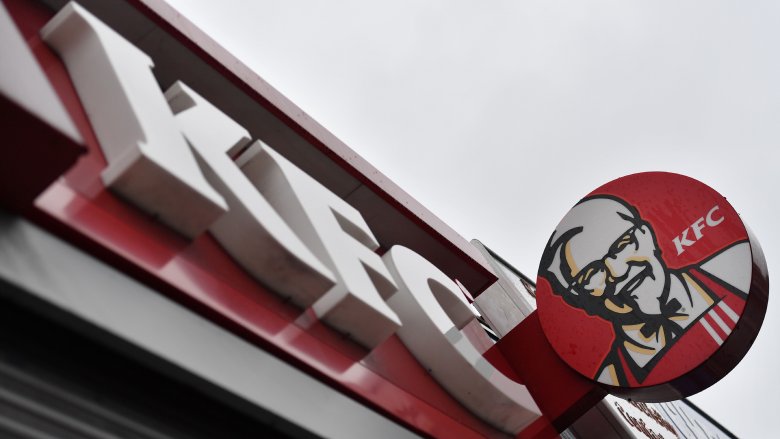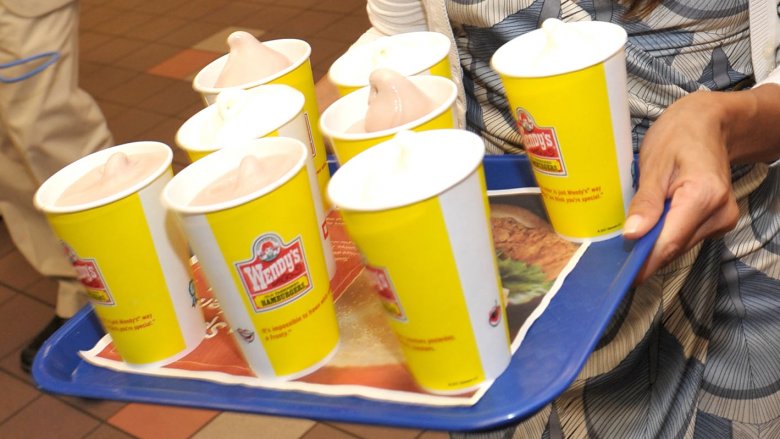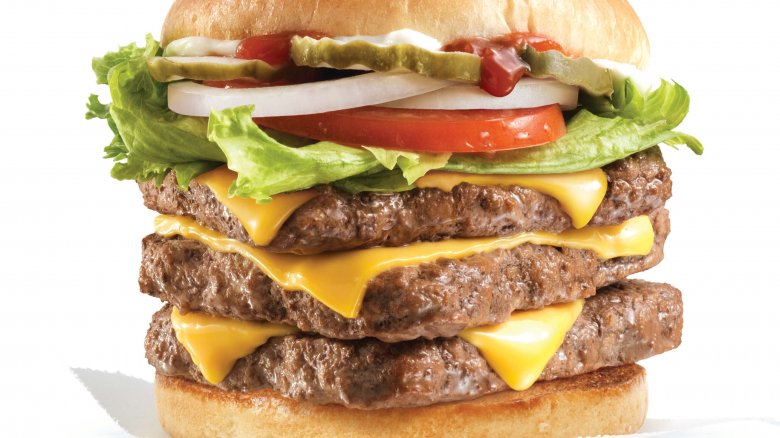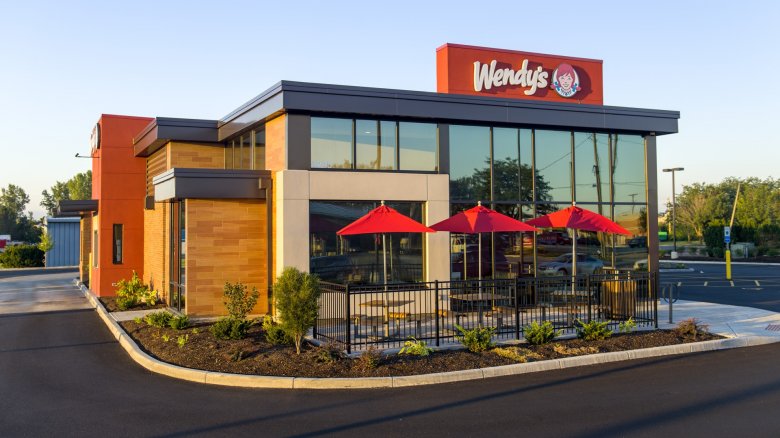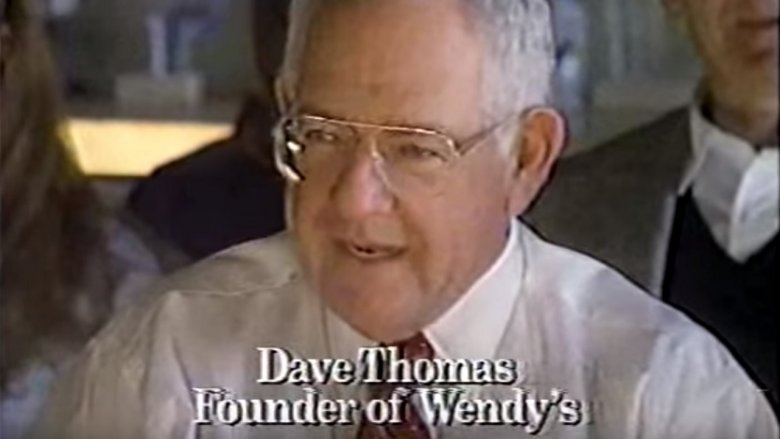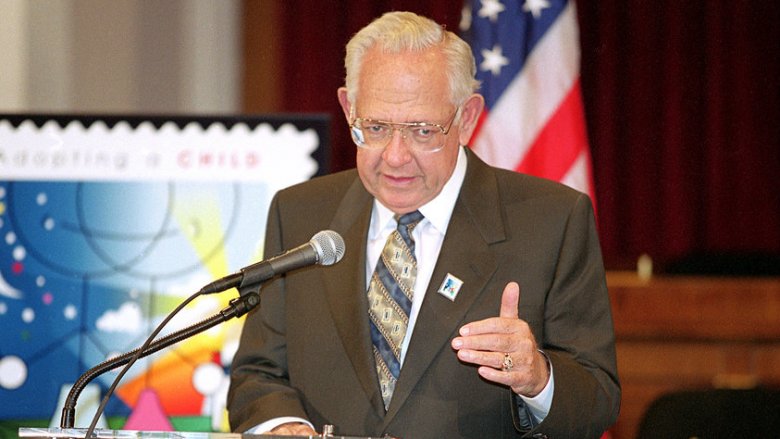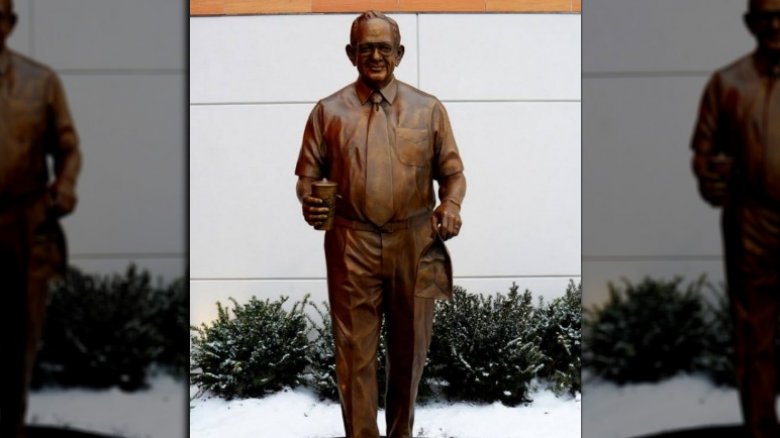The Untold Truth Of Dave Thomas
Even more than a decade after his death, Wendy's founder Dave Thomas' name still resonates with people. Maybe it's the fact that he truly lived the American dream of working his way to the top from humble beginnings. One of his is first jobs paid him $35 per week, but he built a company in Wendy's that was sold for $2.34 billion in 2008.
Maybe it's all those commercials he did. No matter how much he was worth, Thomas always came across as the friendly grandfather. Or maybe we just love his food.
Wendy's made the most of all of Thomas' innovations to become one of the most successful restaurant chains in the world, and it now serves roughly 50 million people each month in the United States.
And while you may already know Thomas had a rough childhood, spurring him to champion causes like adoption and education later in life, we've collected some facts about him that you may not have known. (And if you did know all of these already, go ahead and treat yourself to a large Frosty; you've earned it.)
Thomas' grandma taught him about hard work
Dave Thomas had an unorthodox childhood. He was adopted as a baby, but his adoptive mother died when he was 5 years old. His adoptive father, Rex, moved him from town to town, which caused Thomas to say later that he never felt like he belonged anywhere. In just one decade, he lived in at least 12 different places.
Some of his favorite memories as a child were summers he spent with his adoptive grandmother, Minnie Sinclair. He often mentioned how he admired her work ethic, as she worked several jobs to provide for her family after her husband died.
"Minnie was a motivator," Thomas wrote in his book, Dave's Way (via Investor's Business Daily), adding she often told him, "Quality is everything... If people keep cutting corners, this country's going to be in big trouble." Not surprisingly, the idea of offering quality food and service became a cornerstone for Wendy's.
He would never let anyone see his feet for a sad reason
Thomas and Rex struggled financially, and often lived in poorly maintained boarding houses and trailers as they moved from town to town. He moved out on his own at age 15, and lived at the local YMCA for a while. After finishing the tenth grade, he dropped out of school to work full time before volunteering for the Army and serving from 1950-1953.
Thomas' daughter Melinda, (her nickname is Wendy) told People in 1993 that Thomas often went without basic necessities, saying "He didn't have anything as a kid. He still won't let anyone see his feet, which are all screwed up because he never had proper-fitting shoes."
Thomas never forgot what it was like to have so little, and he displayed tremendous generosity after his success with Wendy's.
"Dad is a very giving guy," she said. "He's earned it, and he shares it."
He wanted to own a restaurant so he could eat for free
Thomas rarely ate home-cooked meals growing up. The restaurants he and Rex frequented usually had cheap hamburgers as the primary menu items. Not that Thomas cared, as hamburgers were his favorite food. "Popeye wasn't my hero," Thomas told Ohio Magazine. "Wimpy was, because he loved hamburgers."
As they often ate in silence, Thomas said he spent the time watching other people in the restaurant, both the patrons and the bustling employees. "I remember watching families sitting together and having a good time," he said. "To me, eating out wasn't just about the food. It was a special event."
He also watched his adoptive grandmother work in an eatery, which made him interested in the restaurant industry, even as a child. But Thomas didn't want to settle for just working in a restaurant ... and, as a young child, he wasn't all that interested in making millions of dollars as a restaurant owner.
"I thought if I owned a restaurant, I could eat all I wanted for free," Thomas told People. "What could be better than that?"
Thomas was very involved with KFC
Although Thomas and Wendy's are forever linked, he's not the most well-known restaurant owner icon. That title belongs to the founder of Kentucky Fried Chicken, Colonel Harland Sanders.
Thomas actually had a working relationship with Colonel Sanders for several years before starting Wendy's.
As a young adult, Thomas worked as a chef at a Hobby House restaurant for Phil Clauss, and helped Clauss make a deal with Sanders to sell his secret recipe chicken before the KFC chain existed. Later, the Clauss family owned four KFC franchises in Columbus, Ohio, but they were failing. Clauss sent Thomas to Columbus to try to turn around the restaurants.
Thomas made significant changes, including trimming the menu and creating a rotating, illuminated bucket of chicken for outside the restaurant. Sanders liked the successful changes Thomas made and incorporated them throughout other KFC restaurants. He also took other advice from Thomas — it was Thomas' idea for Sanders to star in his own commercials.
Thomas, who by then had shares in KFC, sold them back to Sanders for more than $1.5 million.
The Frosty was his idea
Although Thomas' square, fresh hamburger patties were the star of the show when he opened his first Wendy's restaurant in 1969, there was one other item on the original five-product menu that remains extremely popular nearly half a century later: The Frosty.
The other items on the original menu were hamburgers, chili, French fries, and soft drinks. Thomas wanted the Frosty to be thicker than a milkshake but not as thick as soft-serve ice cream, something that people had to eat with a spoon.
Even though the only Frosty flavor was chocolate until 2006 (when vanilla was added), the original flavoring is a mixture of chocolate and vanilla, because Thomas didn't want to overwhelm the taste of the burgers with a chocolate flavor that was too strong. He only had one Frosty machine at the original Wendy's restaurant, and he had to mix the chocolate and vanilla flavors himself.
He didn't come up with square burgers on his own
One of the most well-known aspects of Wendy's hamburgers are the square patties. In a world where round hamburger buns and patties line up perfectly, Thomas' square patties remain a novelty.
The exact reason Thomas chose square patties isn't perfectly clear. One of the most popular theories is that he "borrowed" the idea from Kewpee Hamburgers restaurants, which Thomas supposedly frequented as a child in Michigan. Kewpee's burgers were square, which may have inspired Thomas later in life.
It's also possible Thomas chose square patties to show that they're made from fresh beef. Having a non-traditional shape to the burger patty emphasizes that they're not from a mass manufacturer, and freshness is a mantra that remains important to Wendy's today, which uses 50 pages of instructions to tell franchisees how to create the perfect Wendy's square patty.
Another common idea behind the square patties (and one that came from Thomas himself) is that it came from Thomas' adoptive grandmother, who was fond of telling him to "never cut corners." Having square patties instead of round ones fits that saying perfectly.
Thomas' ideas changed the fast food industry forever
Fast food restaurants are everywhere these days, and they all follow a similar layout and system of providing food to customers. But someone had to come up with the fast food service ideas that we take for granted today (and no, we're not talking about the always garbled speaker system). For many of the best ideas still in use today, Thomas was the originator.
For example, Thomas installed a drive-through section in his second Wendy's in Columbus, Ohio, that had a separate grill area, allowing employees to serve the food faster.
Still, customers often struggled with figuring out how to order with the speaker system in the early days. One of Thomas' daughters, Pam Farber, said she often had to go outside with a pen and paper to take orders from confused drive-through customers.
Thomas diversified his menu, looking to set Wendy's apart from other fast food chains, by adding a salad bar in 1979, which was a radical change for the fast food industry. He later introduced baked potatoes.
In 1989, Wendy's introduced its Super Value Menu, which featured several items for less than $1. Most fast food chains (and many full service restaurant chains) now offer value menus of one type or another.
Thomas starred in more than 800 Wendy's commercials ... after his retirement
After overseeing Wendy's opening its 2,000th restaurant and having the company join the New York Stock Exchange, Thomas retired from day-to-day operations in 1982. However, as earnings fell off, Thomas returned to the company in 1989.
As part of his return, Thomas agreed to become the face of Wendy's in a TV ad campaign. Thomas eventually appeared in more than 800 commercials, many of which were humorous or occasionally featured celebrities alongside Thomas, like actress Susan Lucci or Olympic gold medalist Kristi Yamaguchi. He often wore a signature short-sleeved shirt with a red tie.
Critics lampooned the early commercials, as Thomas appeared nervous with an awkward rhythm and pacing. However, the public trusted Thomas, perhaps in part because the commercials weren't polished, and the ads became a hit.
"He's given Wendy's a corporate identity ... a down-homey type image," Diane Mustain, a financial analyst, told The New York Times in 1991. "The lack of sophistication is a real benefit for the company."
His real half-brother wanted nothing to do with him
At age 21, Thomas attempted to locate his birth parents. His birth mother had died, and he didn't really make a connection with her extended family when they met, according to People. Thomas had no leads to his biological father, so he eventually gave up trying to find any other family members.
However, in 1988 Thomas' daughter, Pam, decided to try to find some additional leads to her dad's biological family members. She tracked down information on Thomas' biological father, who had died by that time, but she also found Thomas' half-brother.
When she reached out to the man, who was an MIT graduate, and wanted nothing to do with Thomas. "He didn't want his mother to know that his father had a little one-night deal," Thomas told People. "He might be very, very smart, but he doesn't have much common sense."
He went to senior prom when he was 61
After the military, Thomas jumped right into the restaurant business, leaving no time to return to high school and obtain his degree.
After his success with Wendy's, he often spoke about the importance of education. But when a high school student questioned why Thomas didn't have his own diploma, it inspired Thomas to return to school and obtain a GED, which he successfully did at Coconut Creek High School in Florida in 1993.
"Dave was worried that his business success might discourage young people from finishing school," Frank Vamos, director of brand communications for Wendy's, told Upworthy. "One of Dave's biggest regrets was dropping out, saying it was one of the worst mistakes he'd made in his life."
As an added benefit of obtaining his GED later in life, he was able to attend prom with his wife in 1993. The senior class at Coconut Creek treated Thomas like one of their classmates.
"They voted me Most Likely to Succeed and elected my wife Lorraine and me Prom Queen and King," Thomas said.
Thomas didn't spend a lot of time with his own family
After what he'd been through, it's no surprise that Dave Thomas often talked about the importance of family and worked to give adopted kids a better childhood than he had.
In his later years, Thomas became an advocate for both hard-to-place children seeking to be adopted, as well as for parents who were trying to adopt children. He founded the Dave Thomas Foundation for Adoption in 1992.
Despite his own childhood, Thomas made up for lost time by starting a family early in his life. He and his wife eventually had five children. But Thomas' family life wasn't as perfect as it may have appeared to be.
Thomas' daughter, Pam, told People that Thomas' tough childhood meant he didn't have many positive experiences to draw upon when he was trying to deal with his own children. "He really didn't know how to treat kids, didn't know how to go to a baseball game," she said. "My mom really held it together."
"How can I explain?" Thomas said. "I like to be around them, but I couldn't do it too much because it would bother me. We'd bug each other."
He didn't move from Ohio to escape estate taxes
After spending much of his adult life in Ohio, Dave Thomas died in 2002 at his home in Ft. Lauderdale, Florida, from liver cancer. Although Thomas owned four homes in the United States and a golf course in South Carolina, the fact that he had residence in Florida at the time of his death sparked a political controversy in Ohio.
A few years after Thomas' death, a state representative in Ohio said that the state's estate tax had caused many Ohioans to leave the state as they became older, seeking a better tax situation in another state. He then mentioned one Ohioan in particular.
"Dave Thomas left the state literally on his deathbed to avoid the estate tax," state representative Jay Hottinger said in a radio interview.
However, research from Politifact showed that Thomas actually established residence in Florida in 1982, two decades before his death, making it highly unlikely he moved to escape any tax situation in Ohio. Thomas continued to perform charitable acts in Ohio, as well as elsewhere in the United States, after moving to Florida.
